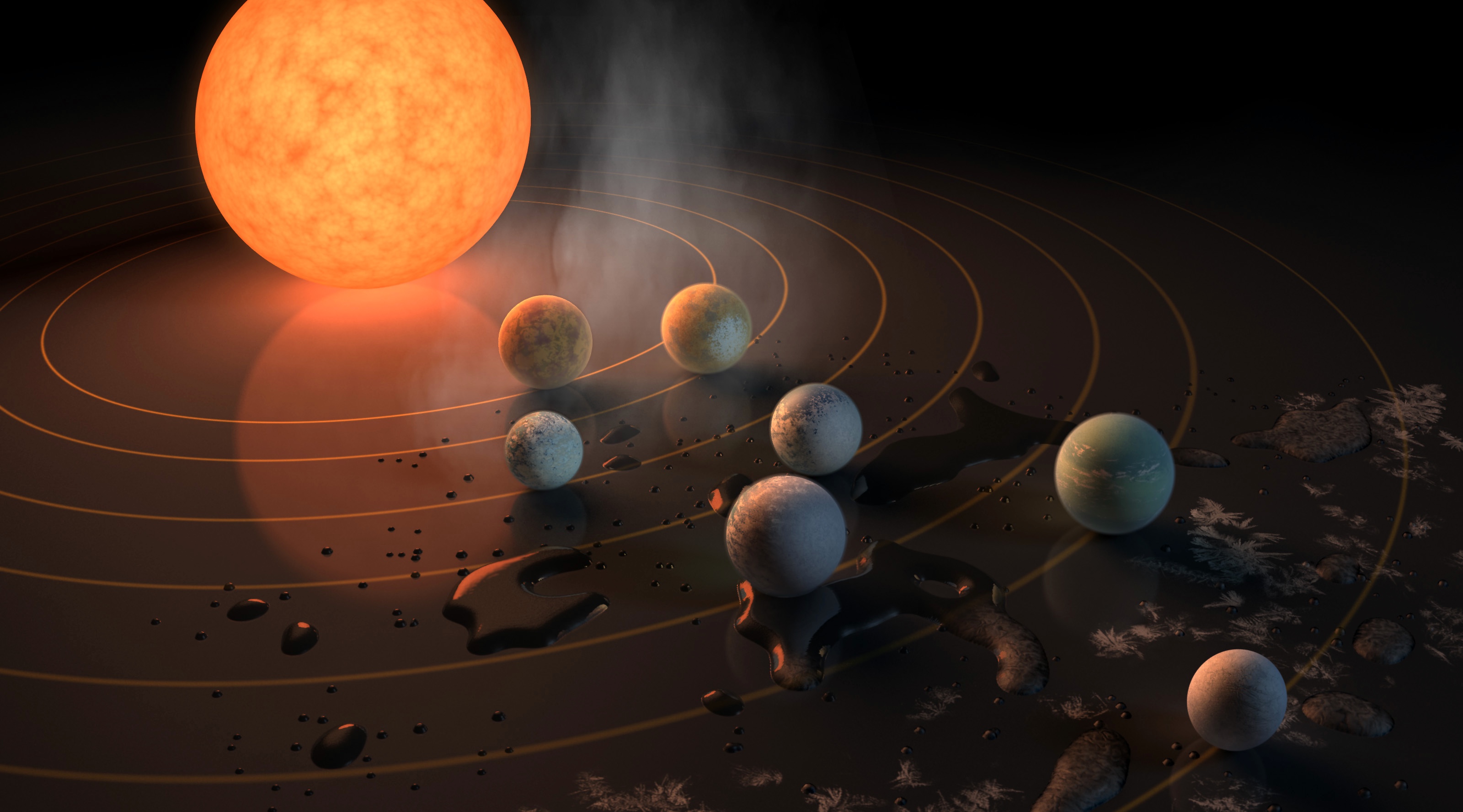Nasa discovers seven new exoplanets with great potential for alien life
Life beyond Earth?

We are living in a great age of discovery. We first confirmed the existence of an exoplanet, one orbiting another star, in 1992. Today, we know of more than 3,500. And Nasa just added seven more to that list.
The exciting thing about these ones is that they're all Earth-sized, all orbiting the same star, and all could have liquid water on their surface. "This discovery could be a significant piece in the puzzle of finding habitable environments, places that are conducive to life," said Nasa's Thomas Zurbuchen.
Dim and cool
The planets were confirmed by the Spitzer Space Telescope, orbiting a star that lies only about 40 light years from Earth in the constellation of Aquarius. The star system has been named TRAPPIST-1 after the Chilean telescope that first glimpsed it.
The star itself is relatively dim and cool – so much so that it's not possible to be seen with the naked eye – and it's barely larger than Jupiter.
Due to the low temperature of the star, all seven of the planets orbit closer to it than Mercury does to our Sun. As a result, if you stood on the surface of one of them, you'd see the others appearing larger than the Moon in our sky.
Weather patterns could also be completely unlike those on Earth – the planets may be tidally locked to their star, meaning both sides will be permanently locked in either day or night. This would create strong winds blowing from one side to the other, and extreme temperature differences.
Exciting Result
"This is the most exciting result I have seen in the 14 years of Spitzer operations," said Sean Carey, manager of Nasa's Spitzer Science Center.
Get daily insight, inspiration and deals in your inbox
Sign up for breaking news, reviews, opinion, top tech deals, and more.
"Spitzer will follow up in the fall to further refine our understanding of these planets so that the James Webb Space Telescope can follow up. More observations of the system are sure to reveal more secrets."
Nikole Lewis, co-leader of the Hubble study and astronomer at the Space Telescope Science Institute in Baltimore, added: "The TRAPPIST-1 system provides one of the best opportunities in the next decade to study the atmospheres around Earth-size planets."
